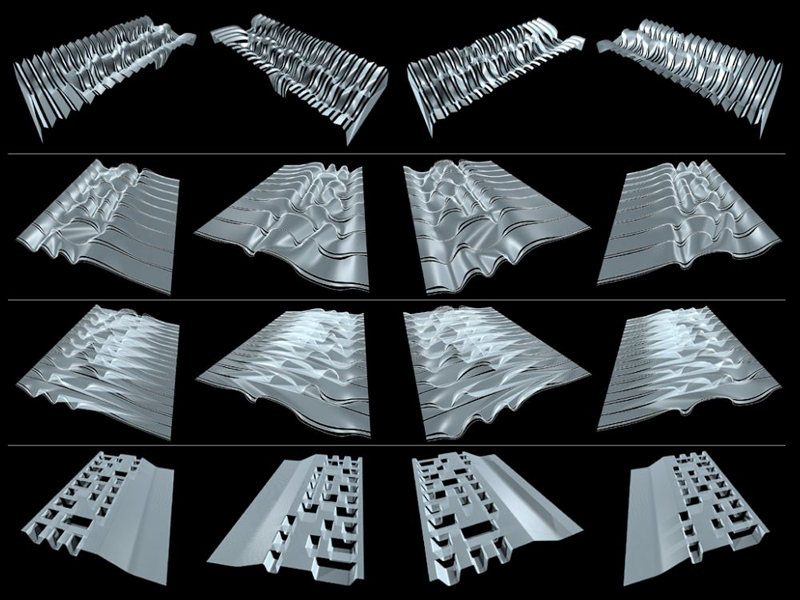
10. Speciation of A Similar Pool of Organizational Information
At the same time, these particular studies attempt to claim that one could also maintain a level of abstraction and treat an environment not just as the physical site but as the modeling environment itself. Using the same pool of organizational information Form-Z, for example, sponsors one kind of development with polygon-based techniques and 3-D Studio MAX sponsors another with nurbs-over-time. This abstraction is both the interest and the problem for me when considering a systematic approach to aspects of the design process that relate to MonodŐs third and most elusive criteria, "teleonomy." These cellular systems, for example, have both a purpose and an identity. Better yet, they have a purpose that in fact produces the identity or, to use John Holland's phrase, a pattern that is stable over time. But this is not necessarily the kind of purpose that one might recognize as architecturally productive. The purpose of the cell is to recognize other cells and produce new cells based on what it sees. As an agent, it performs this act of internal logic without arc-ing toward some end, the telos of teleonomy, or responding to some kind of external factor such as a site. ItŐs strength, however, is that it produces relationships and these relationships become a kind of morphogenetic guideline that can later sponsor programmatic differences and adapt to a site.
<teleonomy . . . epigenesis . . . internal/external . . . unfolding . . . morphogenetic guidelines>